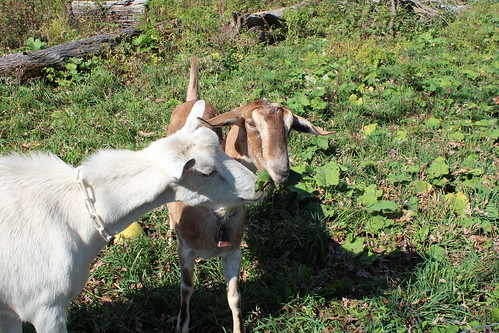
In northern Illinois, a unique area called the Piscasaw Fen is being restored to its native majesty through the cooperation of USDA’s Natural Resources Conservation Service (NRCS) and the Boone County Conservation District (BCCD).
Piscasaw Fen is made up of a 40-acre savanna and a 40-acre wetland along Piscasaw Creek. Savannas are the rarest type of habitat found in Illinois—they are even rarer than wetlands.
Piscasaw Fen was originally a fire-dependent ecosystem; fire controlled undesirable woody species and maintained the open space. Once the land was settled, cattle were allowed to graze, helping to keep the area open. But once the land was left idle, invasive species began encroaching.
A northern Illinois mesic savanna consists of white oak, bur oak and shagbark hickory with a prairie understory. To open the canopy for those species to thrive and to restore the native ecosystem, the undesirable and invasive trees and shrubs must be removed.
NRCS is helping BCCD remove unwanted brush and control invasive species on the property. Restoration planned for in the property’s conservation plan also includes an annual prescribed burn, followed by the seeding of native plants such as bristly aster, sweet Indian plantain, fen thistle and Michigan lily.

BCCD has an innovative restoration plan. First employees remove the dense invasive shrubs by hand. Then goats are brought in and enclosed with a solar-powered electric fence, and they eat the remaining invasive species such as multiflora rose, thistle and garlic mustard. It takes about two to three full growing seasons for the goats to remove most of the unwanted vegetation.
Afterwards, BCCD’s employees, along with a few volunteers, come in during the winter to finish the clearing. With all of these combined efforts, the area will gradually be restored back to its native ecotypes.
In 2010, the Blanding’s turtle, considered endangered in the state of Illinois, was discovered in Piscasaw Fen. To monitor the species’ daily movements, BCCD outfitted four turtles with transmitters. BCCD tracks the turtles to determine habitat availability and usage in their range and modify the restoration efforts accordingly.
Blanding’s turtles may live to be 70 years old. Since they are now primarily found on protected lands, their discovery in Piscasaw Fen was a bonus that only emphasizes the importance of preserving these rare habitats.
Check out more conservation stories on the USDA blog.
Follow NRCS on Twitter.

